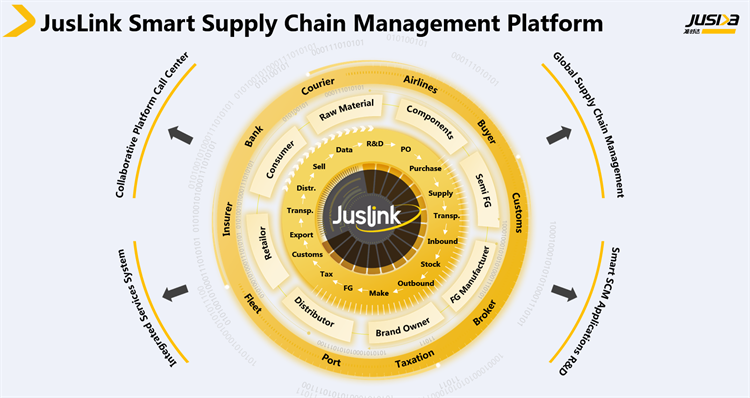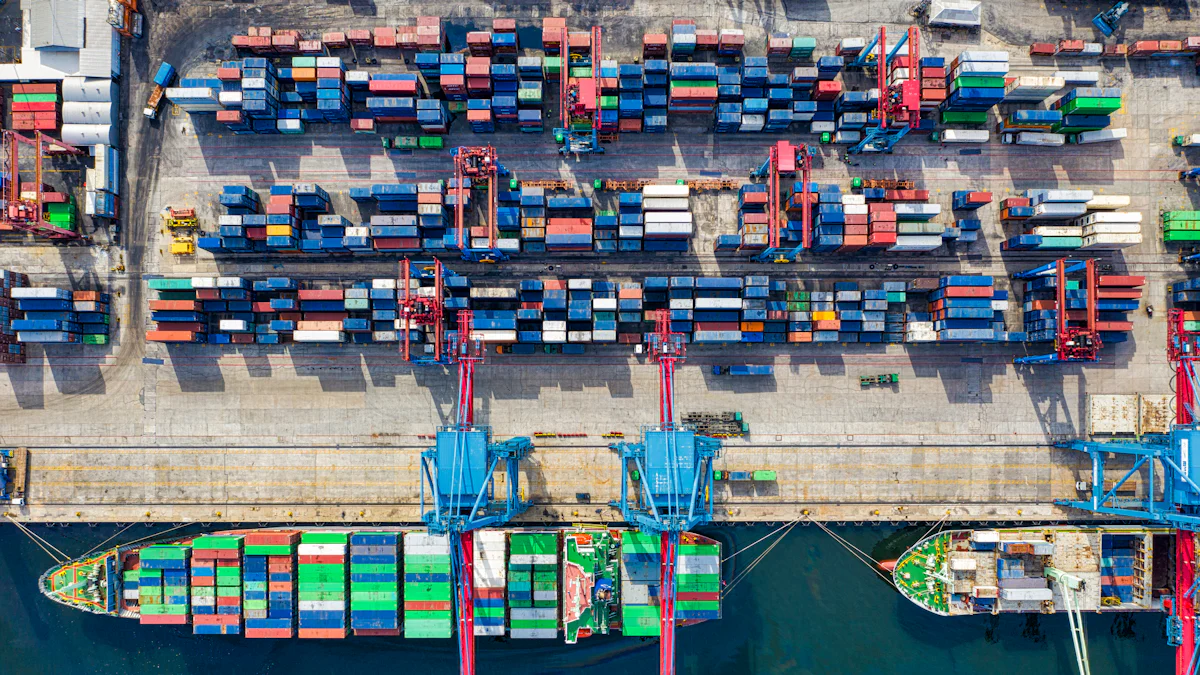How to Improve Supply Chain Visibility

In modern business operations, supply chain visibility stands as a pivotal element driving success. Companies embracing this approach witness significant advantages, including data-driven decision-making and enhanced customer satisfaction. Without proper visibility, businesses face disruptions in their supply chains, leading to operational inefficiencies and dissatisfied customers. Improved supply chain visibility ensures streamlined processes and proactive risk management, essential for thriving in today's competitive landscape.
Understanding Supply Chain Visibility
Definition and Scope
What is Supply Chain Visibility?
Supply chain visibility refers to the ability of organizations to track products, materials, or components as they move from suppliers to manufacturers and ultimately to customers. It involves having real-time insights into every stage of the supply chain process.
Key Components of Supply Chain Visibility
Data Integration: Connecting various systems and sources to gather comprehensive information.
Real-Time Monitoring: Constantly tracking activities and events as they occur within the supply chain network.
Importance of Supply Chain Visibility
Enhancing Operational Efficiency
Improving supply chain visibility allows companies to optimize their operations by identifying bottlenecks, enhancing resource allocation, and streamlining processes for maximum efficiency.
Reducing Costs and Risks
By having a clear view of the entire supply chain, organizations can minimize unnecessary expenses, mitigate risks such as delays or disruptions, and make informed decisions that contribute to cost reduction.
Improving Customer Satisfaction
Enhanced visibility enables businesses to provide accurate delivery estimates, proactively address issues that may impact customer orders, and ensure a seamless experience that leads to higher customer satisfaction levels.
Challenges in Achieving Supply Chain Visibility
Common Obstacles
Data Silos
Data silos within supply chains hinder supply chain visibility by segregating critical information across different departments or systems. This fragmentation leads to disjointed insights, making it challenging to track products effectively and coordinate operations seamlessly.
Lack of Real-Time Data
The absence of real-time data poses a significant hurdle in achieving optimal supply chain visibility. Without up-to-the-minute information on inventory levels, shipment statuses, and production processes, companies struggle to make timely decisions and respond promptly to disruptions.
Complex and Global Supply Chains
Managing supply chain visibility becomes increasingly complex in global operations with intricate networks spanning various regions. Coordinating multiple suppliers, carriers, and partners across borders amplifies the challenge of maintaining transparency and monitoring every link in the supply chain.
Case Studies of Visibility Challenges
Chain.io Story with Brian Glick
Customers can provide feedback and rate their experience through the on-demand delivery platform.
Utilizing customer feedback mechanisms enhances visibility into service quality and operational performance.
Agilent Control Tower Case Study
*Comprehensive Supply Chain Visibility Case Study*
Agilent's case exemplifies the importance of end-to-end visibility for optimizing supply chain processes and ensuring operational efficiency.
BASF Video Case Study: The Value of Real-Time Freight Visibility
Past, Present, and Future of Supply Chain Visibility
BASF's focus on real-time freight visibility highlights the evolution of technology in enhancing supply chain visibility for improved decision-making and risk management.
Strategies to Improve Supply Chain Visibility
Implementing Advanced Technologies
Internet of Things (IoT)
Implementing Internet of Things (IoT) technology in supply chains offers real-time insights into product movements, enhancing visibility across the entire network. IoT devices track shipments, monitor inventory levels, and provide data for informed decision-making.
Blockchain Technology
Blockchain technology revolutionizes supply chain transparency by creating an immutable ledger of transactions. This ensures data integrity and security, enabling stakeholders to trace products from origin to destination seamlessly.
Artificial Intelligence and Machine Learning
Leveraging Artificial Intelligence (AI) and Machine Learning (ML) algorithms optimizes supply chain processes by predicting demand fluctuations, identifying patterns in data, and automating repetitive tasks. These technologies enhance visibility by providing actionable insights for proactive management.
Enhancing Data Integration
Centralized Data Platforms
Centralizing data through advanced platforms streamlines information sharing among supply chain partners. By integrating data from various sources into a unified system, organizations gain a comprehensive view of their operations for improved decision-making.
Real-Time Data Analytics
Real-time analytics tools empower businesses to analyze incoming data instantly, enabling quick responses to changing conditions. By utilizing predictive analytics and monitoring key performance indicators in real time, companies enhance their visibility into supply chain dynamics.
Collaboration and Communication
Partner and Supplier Collaboration
Collaborating closely with partners and suppliers fosters transparency throughout the supply chain. Establishing open communication channels allows for seamless information exchange, joint problem-solving, and mutual support in achieving shared goals.
Transparent Communication Channels
Maintaining transparent communication channels with all stakeholders promotes trust and accountability within the supply chain ecosystem. Clear communication ensures that relevant information is shared promptly, leading to enhanced visibility into processes and potential challenges.
JUSDA's Approach to Supply Chain Visibility
JusLink Platform Capabilities
Full-Chain Supply Chain Visibility
JUSDA's JusLink platform offers a comprehensive solution for achieving full-chain supply chain visibility. This capability allows businesses to monitor and track every aspect of their supply chain operations, ensuring transparency and efficiency throughout the entire network.
Real-Time Monitoring
With real-time monitoring embedded in the JusLink platform, organizations can stay informed about the status of their supply chain activities as they unfold. This feature provides up-to-the-minute insights into critical processes, enabling proactive decision-making and swift responses to any emerging issues.
Risk Prevention
The JusLink platform prioritizes risk prevention by leveraging advanced monitoring tools and predictive analytics. By identifying potential risks early on, companies can implement preemptive measures to mitigate disruptions and uphold the reliability of their supply chain operations.

One-Stop Dynamic Management
Centralized Information Visualization
Through centralized information visualization, JUSDA's JusLink platform offers a single point of access for all relevant data and insights. This centralized approach streamlines data management, allowing stakeholders to view key information in a clear and structured manner for enhanced decision-making.
End-to-End Visibility and Collaboration
By promoting end-to-end visibility and collaboration, the JusLink platform facilitates seamless communication and coordination among supply chain partners. This collaborative environment ensures that all stakeholders are aligned on objectives, share real-time information, and work together towards common goals effectively.
Data-Driven Insights
Leveraging Big Data and Analytics
JUSDA harnesses the power of big data and analytics within the JusLink platform to derive valuable insights for optimizing supply chain operations. By analyzing large datasets, businesses can uncover trends, patterns, and opportunities that drive informed decision-making and continuous improvement.
Enhancing Decision-Making Processes
The integration of data-driven insights into decision-making processes enhances operational efficiency within supply chains. With access to real-time analytics and performance metrics, organizations can make strategic decisions promptly, adapt to changing market conditions, and maintain a competitive edge in today's dynamic business landscape.
Benefits of Improved Supply Chain Visibility

Operational Benefits
Companies with high levels of supply chain visibility achieve streamlined processes, leading to enhanced operational efficiency and optimized resource allocation.
Better Inventory Management:
Businesses benefiting from improved supply chain visibility experience better inventory management practices, ensuring adequate stock levels, minimizing excess inventory costs, and optimizing warehouse operations.
Financial Benefits
Cost Savings:
Organizations embracing enhanced supply chain visibility report significant cost savings through minimized expenses, optimized production processes, and reduced operational inefficiencies.
Increased Profit Margins:
Businesses leveraging improved supply chain visibility witness increased profit margins by making informed decisions based on real-time data insights, reducing waste, and enhancing overall supply chain performance.
Customer-Centric Benefits
Enhanced Customer Experience:
Companies prioritizing superior supply chain visibility deliver an enhanced customer experience by ensuring timely deliveries, accurate order fulfillment, and proactive issue resolution for maximum customer satisfaction.
Faster Response Times:
With heightened levels of supply chain visibility, businesses can respond swiftly to changing market demands, address disruptions promptly, and adapt their operations efficiently to meet customer needs in real time.
Supply chain visibility significantly impacts businesses by enabling informed decision-making at every operational stage. This visibility drives higher productivity, enhances customer satisfaction, and ultimately contributes to increased profitability. Companies leveraging supply chain visibility witness operational efficiencies that streamline processes, boost productivity, and elevate customer experience. Looking ahead, the future of supply chain visibility holds the promise of continued growth, innovation, and enhanced competitiveness in the dynamic business landscape.
See Also
The Power of Visibility for Supply Chain Efficiency
Optimizing Operations with Comprehensive Supply Chain Visibility
The Importance of Transparency in Achieving Supply Chain Goals
Driving Growth: How Supply Chain Visibility Impacts Global E-commerce
Improving Supply Chain Performance through Cloud-Based Solutions
